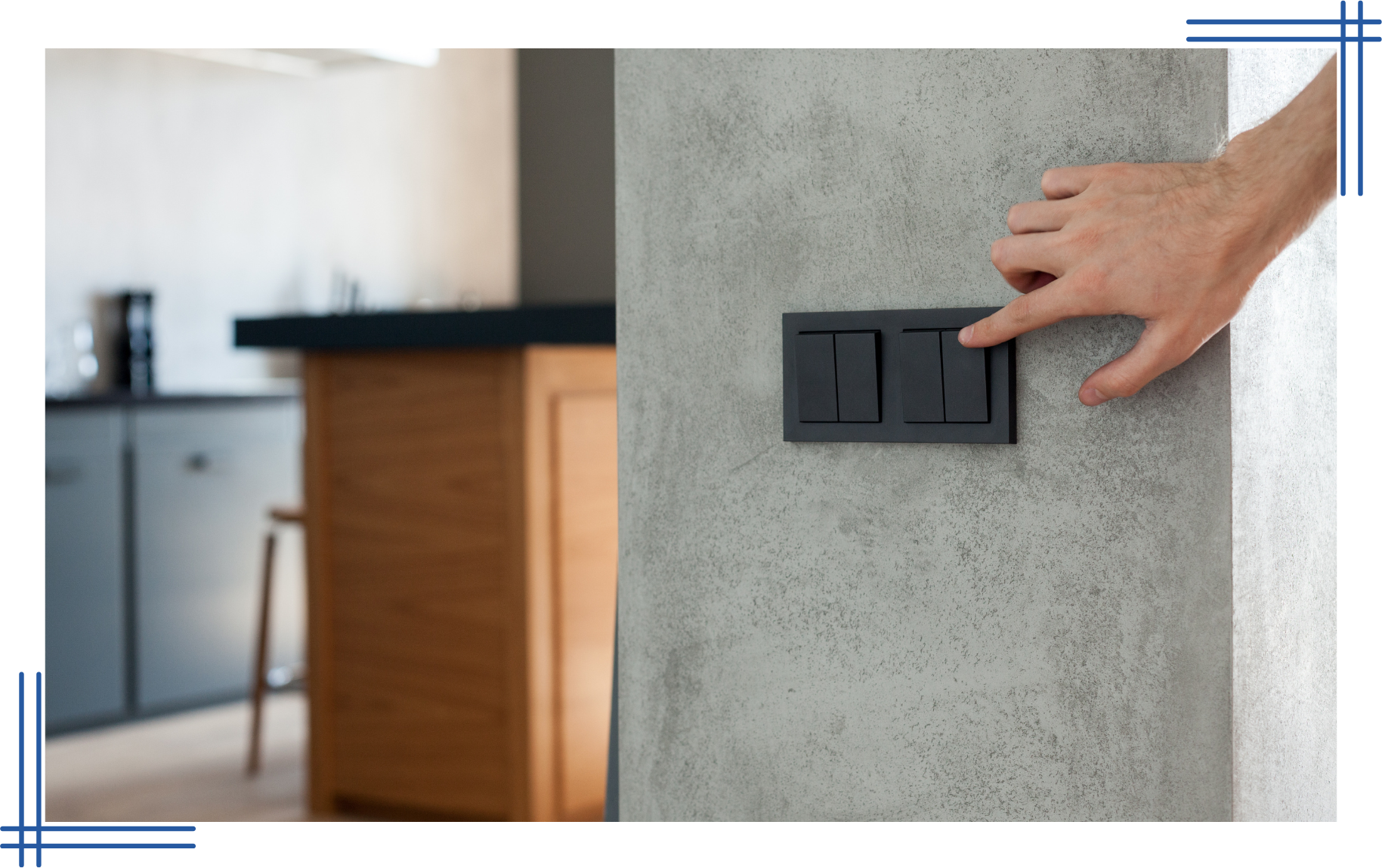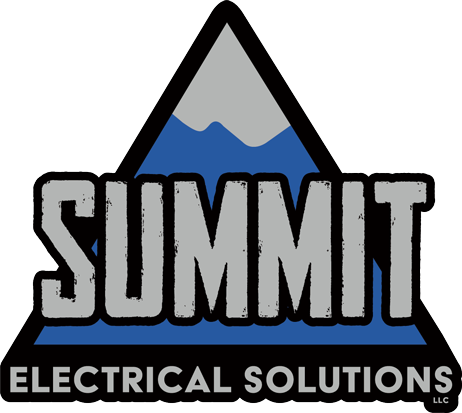
Slide title
Write your caption hereButton
Plug And Switch Installation

Slide title
Write your caption hereButton
Plug And Switch Installation
Outlets and switches may seem like mundane components, but they are the backbone of a home's operational efficiency. Upgrading these elements is not just an investment in a property; it is an investment in a lifestyle.
In the modern home or office, the need for diverse and multifunctional electrical outlets has never been more apparent. As we increasingly rely on a variety of electronic devices for both work and leisure, the traditional single or dual outlet setup often falls short of meeting our daily requirements.
Advances In Lighting And Lighting-Adjacent Accessories
One significant advancement is the addition of multiple outlets in home offices. With the rise of remote work, the home office has become a critical part of many households. Having multiple allows for the simultaneous use of several devices—such as computers, printers, phones, and desk lamps—without the need to swap cables or juggle adapters. This setup not only caters to efficiency but also helps in maintaining an organized and clutter-free work environment.
Another transformative feature in modern electrical planning is the inclusion of USB-equipped outlets. These facilitate direct charging of devices without the need for bulky adapters, thus freeing up space for other uses. Strategically placing these USB outlets near bedside tables, work desks, or lounging areas can significantly streamline how devices are charged and managed, simplifying daily routines and reducing household clutter.
Additionally, those with built-in nightlights represent a thoughtful integration of functionality and safety. These are equipped with small, energy-efficient lights that provide gentle illumination during the night. This feature is especially useful in hallways, bathrooms, and children’s rooms, where minimal lighting can safely guide movement without the harshness of full overhead lights. Such installations not only enhance safety by preventing trips and falls but also contribute to energy conservation by eliminating the need for more substantial lighting during nighttime hours.
Importance Of GFCI Outlets
The necessity of GFCIs in moisture-exposed areas is grounded in both safety and regulatory compliance. Moisture can act as a conductor for electricity, greatly increasing the risk of shock. To mitigate these risks, GFCIs are typically required by building codes in kitchens, bathrooms, outdoor spaces, and other areas susceptible to moisture. This mandate reflects a standard safety protocol aimed at protecting residents from potential electrical hazards.
The safety benefits of installing GFCIs in these high-risk zones are considerable. By instantly interrupting the flow of electricity upon detecting a fault, GFCI outlets reduce the risk of shock injuries and fatalities. Upgrading to GFCIs is not just a regulatory fulfillment; it's a proactive measure towards ensuring household safety. For homeowners renovating or constructing new spaces, incorporating GFCI outlets is a critical step in safeguarding the home environment against the dangers of electrical mishaps in moisture-prone areas.
Switch Enhancement Options
The most basic form of switch—the toggle—remains widely used because of its reliability and simplicity. However, as our living spaces become more integrated with technology, the functionality expected has evolved. Today, homeowners have the opportunity to enhance the ambiance and functionality of their environments through various advanced switching options.
One of the most impactful enhancements available is the installation of dimmer switches. These devices allow for the adjustment of lighting levels, enabling users to create the perfect atmosphere for any occasion. Whether it's a soft glow for a romantic dinner or bright lighting for reading, dimmers provide a range of settings that can dramatically alter the feel of a room. Upgrading to dimmers during repairs or renovations is not just about aesthetic preference; it's about gaining control over the energy usage and comfort of the space.
Additionally, the rise of smart home technology has introduced the potential for integrating smart switches into existing electrical frameworks. Smart switches can be controlled remotely via smartphones or voice-activated home assistants, offering unparalleled convenience and efficiency. They can be programmed to operate on schedules, respond to activity in the home, or adjust based on ambient lighting conditions, thus enhancing both the security and energy efficiency of the home.
When To Consider Replacement Over Repair
Firstly, the age and condition of the existing outlets and switches are primary factors. Older components not only wear out and become less reliable but may also fail to comply with current safety standards. This is particularly true in homes that still have two-prong outlets, outdated toggle switches without modern safety features, or visibly worn units that pose safety risks such as sparking or inconsistent performance. When these conditions are present, replacement is not only advisable but necessary to ensure safety and compliance with modern electrical codes.
Another compelling reason for replacement is the opportunity to upgrade to more advanced technology. Installing outlets with built-in surge protectors provides a major benefit by safeguarding sensitive electronics from voltage spikes. Power surges can occur unexpectedly and can damage or destroy electronic devices. Those with integrated surge protection offer a permanent layer of security that can prevent costly losses due to electrical surges.
Additionally, replacing old switches with new, energy-efficient models can lead to significant long-term savings on energy bills. Modern switches like dimmers, timers, or motion sensors help reduce energy consumption by allowing greater control over when and how much lighting is used. They automatically adjust lighting based on the presence or absence of people in a room or set schedules, which enhances both convenience and energy efficiency.
Contact Summit Electrical Solutions today to discuss your electrical needs. Let us help you make informed decisions that can enhance the comfort and functionality of your space, ensuring it is equipped to handle the demands of modern technology and lifestyle.
Frequently Asked Questions
Q1: Can you install an outlet upside down and is there an advantage to doing so?
A1: Yes, you can install them upside down, and in some cases, there are practical advantages. For instance, in commercial settings, upside-down outlets are used to indicate a dedicated circuit or one that is controlled by a switch. Additionally, for safety, some prefer the ground pin at the top to catch the plug if it partially falls out, preventing the live pins from being exposed.
Q2: Why do some plugs have holes in the prongs?
A2: The holes in the prongs of an electrical plug are there for several reasons. One practical use is that they can help hold the plug securely in the socket with small bumps inside the outlet, which fit into these holes. Another reason is for manufacturing purposes, allowing hooks for the assembly line machines to grip the plug.
Q3: What happens if a light switch is wired with the polarity reversed?
A3: If one is wired with the polarity reversed, it can still function, but it may create a potentially unsafe condition. Normally, the switch is meant to interrupt the 'hot' wire. If wired incorrectly, the switch controls the 'neutral' wire instead, leaving the circuit hot even when the switch is turned off. This can pose a shock hazard during maintenance or bulb replacement.
All Rights Reserved | Summit Electrical Solutions
